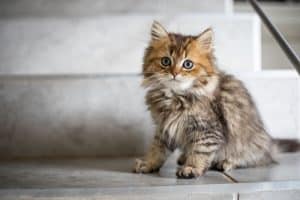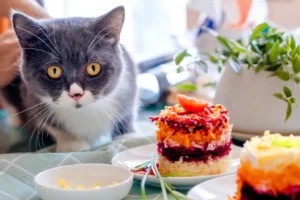You’ve probably seen a lot of kittens with blue or gray eyes and wondered whether this is normal in both kittens and adult cats. The explanation is quite simple:
All healthy kittens are born with blue eyes because their bodies lack melanin, which is normal. When the eye color changes from blue, it may become gray temporarily until it finally changes to a permanent color. However, permanent gray eye color is not normal for an adult cat.
The process of a kitten’s eyes changing color is akin to humans’ baby teeth falling out to make way for permanent teeth, signaling a transition from infancy to maturity.
This article explores why some cats have gray eyes, the normal cat eye color, and what cat eye color means.
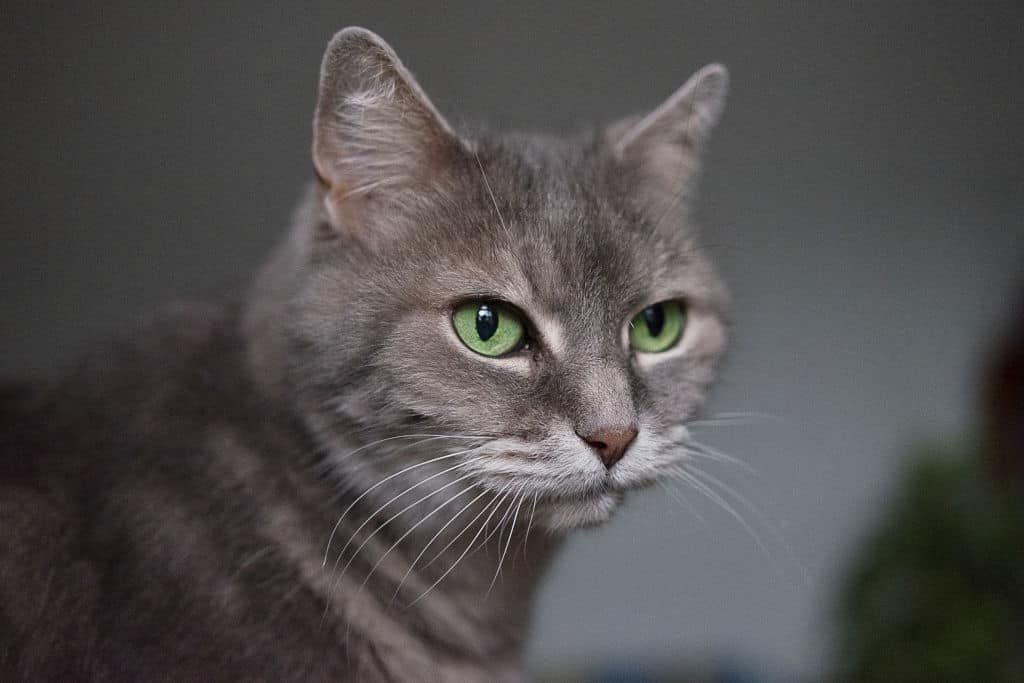
Why Would a Cat Have Gray Eyes?
Gray eye color in cats is usually only temporary. Many kittens will develop gray eyes at some point, as their eyes typically turn grey when transitioning from their baby eye color to their adult eye color.
Blue eyes are present when kittens are born. Blue is the natural pigment of the eye, and the kitten’s actual eye color will emerge as it grows. Their eyes may temporarily turn gray on the way to their permanent eye color.
This transition phase from blue to the adult eye color is a fascinating window into the development of a kitten, not unlike watching a butterfly emerge from its chrysalis.
All kittens are born with blue eyes because blue eyes have little to no melanin, and their bodies do not produce it. When more melanin is produced, the color changes to green or yellow, which takes about ten weeks to complete. Your cat’s permanent eye color should be yellow/gold or green after a few months.
In some rare cases, nutritional deficiencies can impact the speed and intensity of the color change, emphasizing the importance of a balanced diet in the early stages of a kitten’s life.
Do Cats Eyes Color Change Over Time?
Cats’ eyes change color from kitten to adulthood. Adult cats may also change color several times, but this is usually due to changes in the environment and the cat’s health.
Cat’s eyes usually change from blue to adult color after a few months due to melanin changes in the body. The default color of the eyes is blue, and pigmentation develops later.
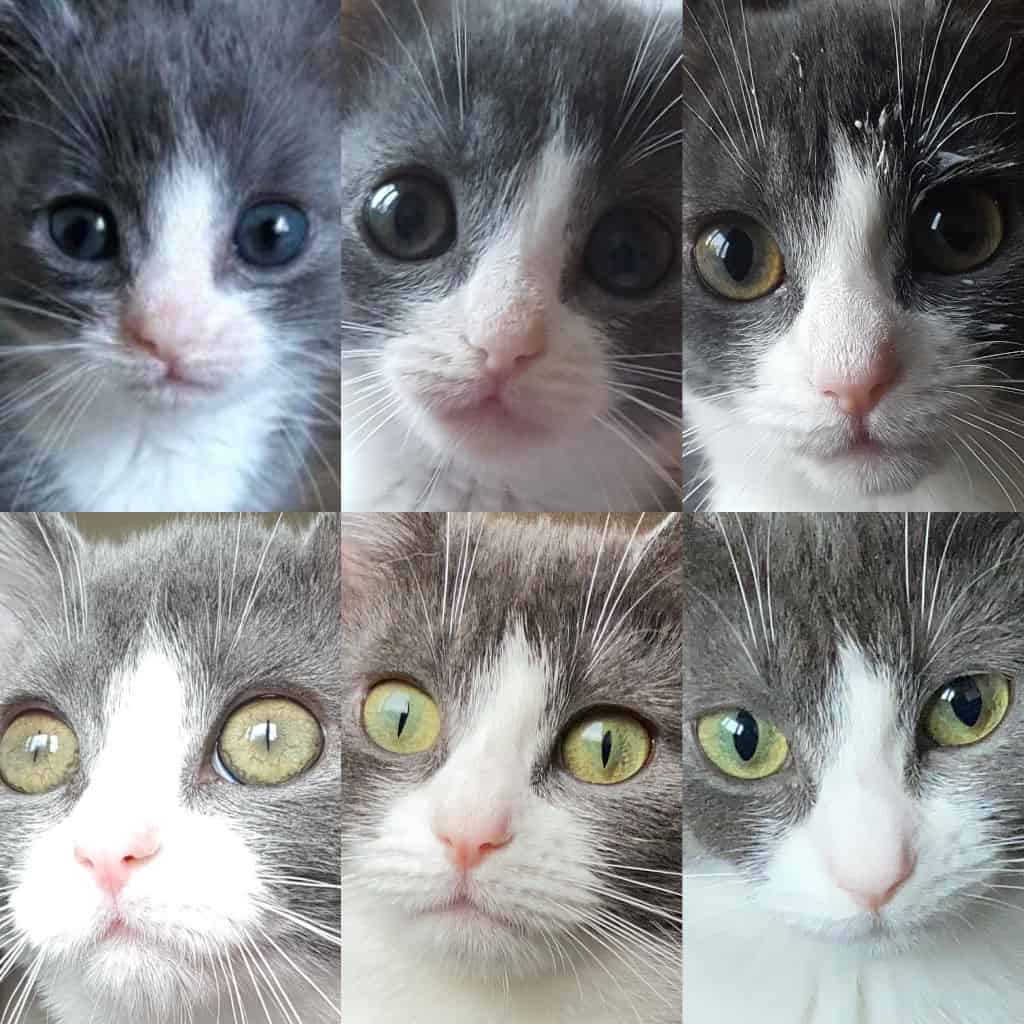
Consistent documentation, perhaps through monthly photographs, can provide a clear timeline of when your kitten’s eyes start showing their permanent hue.
For adult cats, a change in eye color is not common and may indicate a health problem. But remember that the color of a cat’s eye can vary depending on the angle of the light, and natural daylight for observation often provides the most accurate representation of their eye color.
While kittens’ eyes change color as they grow, a change in an adult cat’s eye color can indicate something serious, such as eye trauma, disease, or loss of vision. It might be worth having it checked out by someone suitably qualified.
Changes in eye color can be a warning sign.
It is critical to distinguish between a normal color change and one that may indicate a health problem.
Keep an eye out for any abrupt color changes that occur in a short period. Changing color can indicate an eye infection or inflammation (uveitis), but it can also indicate a more severe condition.
The bottom line is that an adult cat’s eyes rarely change color, but it can happen, just like cats’ whiskers can change color. If you notice a change in the color of your cat’s eyes, it could be due to a change in the lighting, but it could also be a health issue.
Interesting fact: Most humans and animals experience eye change. We are born with blue/grey eyes that change as we grow older and no longer require our mother’s milk. However, unlike cats, we typically develop brown or hazel eyes rather than yellow or green eyes.
Will Your Kitten Always Have Gray Eyes?
Many kittens start with stunning blue eyes that gradually fade and change to a different color, such as yellow or green. If your kitten was born with blue eyes, the color of those eyes will most likely change as it grows older.
I’ve had three kittens born in my home who never had the same color eyes as adults.
Because of color genetics, all kittens have blue eyes that quickly change to the adult color. Cats’ eyes are typically blue as kittens and gradually turn green as they mature. After that, their true eye color should begin to emerge.
My male cat had gray fur and gray eyes at first, but after about seven months, his eyes turned typical cat yellow. I always wished he still had his baby gray eyes, but it’s natural for them to change.
Does the Color of the Cat’s Eyes Mean Anything?
Kittens are born with blue eyes, which usually change as they mature, and then they adopt a permanent eye color. Cat eye color is directly linked to the coat color and is more intense in pedigree cats, while random-bred cats may show mixed tones.
For example, Siamese cats have blue eyes, Tonkinese green, and Burmese have golden eyes. White cats can have cyan, green, yellow, or copper eyes. There are many odd and unusual colors with some breeds, as well.
You can see the common cat eye colors in the picture below:

Most cats see much better in the dark than humans, but they may not see most colors as we do. In addition, they have a larger field of vision than us and see much sharper horizontally than vertically.
Some eye colors can indicate unusual characteristics.
More than one color in a single eye is rare and is referred to as dichroic (or dichromatic) eyes. For example, the eye could be half green and half blue, or it could have a green iris surrounded by yellow. It’s because the cat’s irises have different amounts of melanin in different spots.

Some cats, known as odd-eyed (heterochromatic) cats, have different colored eyes. The scientific term for this is heterochromia, which occurs when a cat has one blue eye and one green, yellow, or brown eye. Heterochromia can affect both dogs and humans.
Historically, sailors and farmers considered these odd-eyed cats to bring good luck, and they were often sought after to ward off evil spirits.
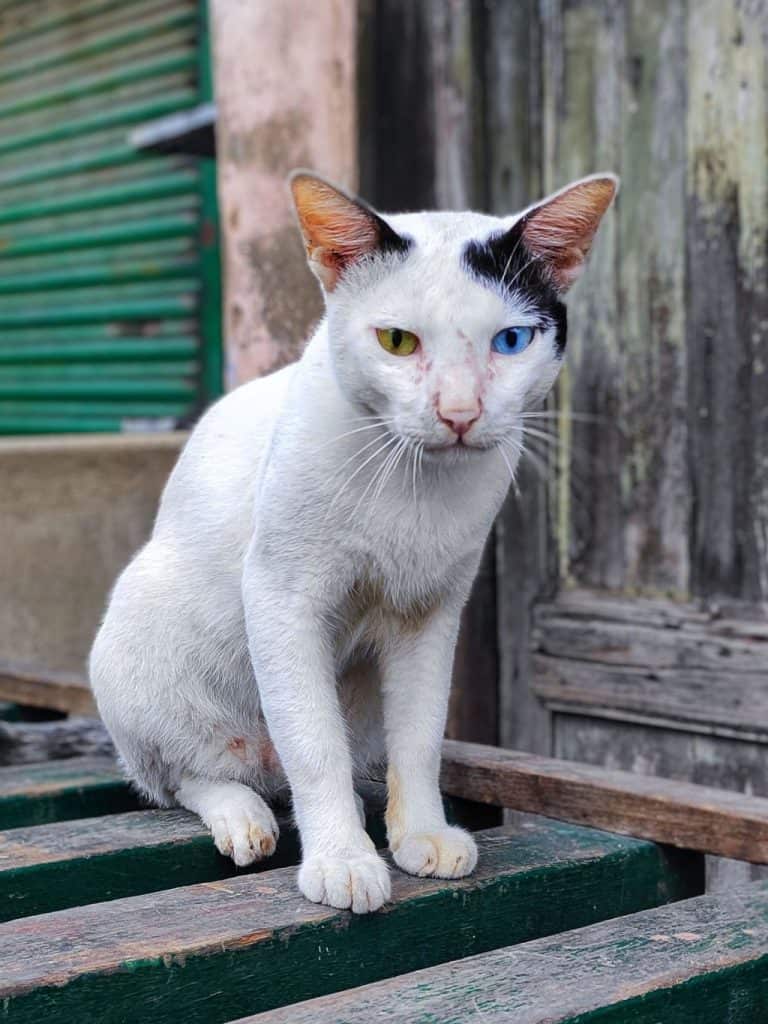
Other times, there may be a few signs of the unhealthy cat’s eyes to look out for, indicating various health issues.
For example, researchers found that 17–22% of white cats who don’t have blue eyes are born deaf. If the white cat has one blue eye, the percentage rises to 40%, and if both eyes are blue, the percentage rises to anywhere between 65% and 85%.
In general, if the cat’s eyes appear darker than usual, this could be due to a buildup of red blood cells. Cloudy eyes can be a sign of cataracts or glaucoma. Copper eyes are occasionally one of the symptoms of a liver shunt. These are valid reasons to take your cat to the vet for a checkup regularly.
FAQs
What is the most unusual cat eye color?
Cats with dichromatic eyes, combining two distinct colors in a single eye, have the most uncommon eye coloring. The 2nd most unusual cat eye color is in the odd-eyed cat (heterochromia), with two eyes of entirely different colors.
What is the most common eye color in cats?
Cats’ most common eye color is green, yellow, and amber. White cats may have blue, green, gold, or copper eyes, while most black cats have green eyes.
Can cats have purple eyes?
Neither kittens nor adult cats can have purple eyes. The closest to it is the lilac or pink-colored albino cats, whose eyes may appear purple under certain lighting conditions. However, for the most part, their eyes aren’t truly purple.
Alex, a passionate animal lover, has experience in training and understanding animal behavior. As a proud pet parent to two dogs and three cats, he founded AnimalReport.net to share insights from animal experts and expand his knowledge of the animal kingdom.

